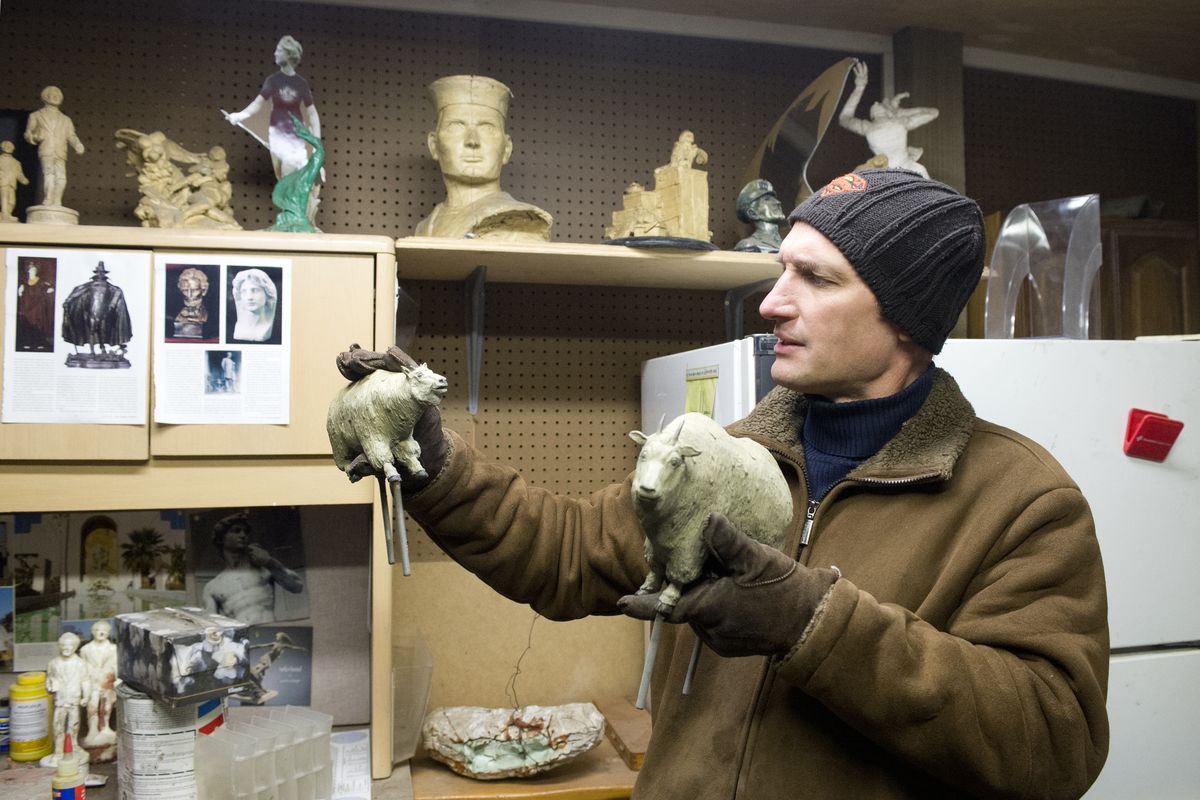Coeur d’Alene artist misses stolen statues

This was no impulse heist, no random act of vandalism.
Whoever took “Kate” – and it took more than one to do the job – schemed, brought the right tools for heavy cutting and absconded with her in the cover of night.
“It was an organized attack,” said David Clemons, the Coeur d’Alene artist who created the bronze statue that lit up Riverstone Park near the Spokane River.
The theft of public art is always offensive, but this one really stings, Clemons said.
“Even though this piece belonged to the city, it’s my city,” he said. “There was a little more sense of ownership here.”
He’s seen it happen to his work before. A small mountain goat Clemons made for a granite bench near the city library disappeared a few years back on the Fourth of July.
Then in 2011, a 700-pound pelican he called “Omay” was stolen from a public park in Novato, Calif.
Clemons presumes the larger pieces were taken to chop up and sell for the copper content. The thieves crudely cut the statues from their bases.
“You’d like to think somebody stole it for their private collection,” he said. “This, they’re saying we’re going to just melt it down.”
Bronze artworks have gone missing across the country in recent years, coinciding with a surge in metal theft from farms, building sites and utilities. “Pioneer Woman,” a $75,000 sculpture that stood outside a museum in Independence, Mo., was cut into pieces and taken to a scrap yard, which notified police.
“Kate” was taken before sunrise Jan. 18. Valued at $25,000, the whimsical piece depicted a woman pedaling a bicycle with two dogs tagging along.
“It’s just such a shame,” said Eden Irgens, who chairs the Coeur d’Alene Arts Commission. “I loved that piece so much. I spend a lot of time in that park. My own kids have climbed up on that bike. It’s such a loss for us.”
The theft may influence what types of public art gets commissioned or where the pieces are placed, Irgens said.
“I hate to say we have to completely revise our view of what is going to be acceptable for public art based 100 percent on vandalism, but we might have to do that,” she said. “Bronze is certainly something people are trying to get their hands on for money.”
The Coeur d’Alene Police Department is investigating the felony theft and told area recyclers to be on the lookout for the sculpture. But Clemons doesn’t expect to see her returned intact.
“It’s a horrible thing … to steal from a community,” he said. “These are one-of-a-kind that are taking hours and hours of personal care and devotion to create.”
Among other local works by the artist are the big eagle atop the Coeur d’Alene police station and the head of a young sailor to commemorate the naval training station that is now Farragut State Park.
The city has asked the artist to submit a proposal for what it would cost to replace “Kate.” Clemons has no casts for the piece and would need to recreate it from scratch.
“If we’re going to remake it, how do we make it more difficult to take next time?” he said Monday at his studio southwest of town.
He is contemplating stronger supports under the bronze or a bulkier base to anchor it to the ground. But Clemons said he prefers designs that look delicately balanced, as if about to take flight. He doesn’t want to abandon that sense of balance and buoyancy. Nor does he want to see his public art placed out of reach.
“That’s what I kind of liked about ‘Kate.’ Kids would come and sit on those dogs, they had their hands on it,” he said. “I liked the fact that for the people who enjoyed it while it was there, they enjoyed it in a much more … tactile way.”
He also may pitch a steel replacement instead of another bronze.
The sculpture originally was made from concrete and fiberglass and set along the Centennial Trail at Stateline, but there it endured repeated vandalism. The city had Clemons recast it in bronze, a more durable material, and moved it to Riverstone Park in 2007.
Clemons had envisioned a string of six nostalgic figures along the Centennial Trail but created just one other, “Leopold,” an old-time photographer that sits at Higgens Point. It, too, has been subjected to abuse, including gunfire from passing cars on Interstate 90.
“They just try to hit it as they go past,” Clemons said. “So it’s taken a beating out there.”
But he hasn’t given up on public art.
“There’s something that’s incredibly gratifying about being able to do the sculptural pieces because they have a staying power,” he said.
“Assuming nobody steals them.”